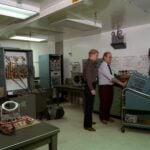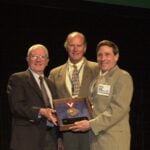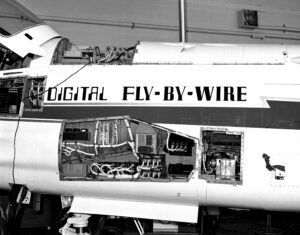Digital Fly-by-Wire
Inducted In: 2010, Transportation
The early 1960’s saw embedded computers advance sufficiently to be used in Apollo spacecraft. By the late 1960s, NASA Flight Research Center (previously Dryden Flight Center, now Armstrong Flight Research Center) engineers began work to replace mechanical flight-control with digital fly-by-wire technology. Support came from Neil Armstrong who backed the transfer of a U.S. Navy F-8C Crusader to NASA which became the F-8 Digital Fly-By-Wire (DFBW) research aircraft. Proven performance and solid cooperation between NASA and industry translated into use of DFBW systems in new aircraft design in a remarkably short time.
Today DFBW equipped aircraft maintain constant speed and altitude over long distances to increase fuel efficiency. The elimination of bulky hydraulics, cables, rods and pulleys allows for increased payload and greater range. The electronic systems require less maintenance and improved reliability with fewer mechanical parts to fail. These systems are also easier to install and troubleshoot which make assembly and maintenance more efficient. And the reduced vulnerability to battle damage makes DFBW ideal for military aircraft. DFBW technology has enabled a quantum jump in design and performance to deliver vastly improved flight characteristics that could not have been achieved otherwise. Safer and more efficient aircraft around the globe represent a major aeronautics success and as well as another prime example of how technology developed for space exploration directly benefits life on Earth.
*Credits – photos by Nasa
Related Technologies

Power Factor Controller
Inducted In: Transportation
Millions of alternating current motors are in use throughout industry and in consumer products. Much of the power they consume, however, is wasted because electricity is fed to homes and factories at a fixed voltage level which is not required…

Advanced Lubricants
Inducted In: Transportation
[embed]https://www.youtube.com/watch?v=LN_GoNVAJKc[/embed] In the mid 1990s NASA discovered an environmental problem with the material that was being used to lubricate the massive track system on the shuttle mobile launch transporter. Not surprisingly the lubricant requirements are rather extraordinary for this transporter.…

Digital Latching Valve
Inducted In: Transportation
NASA requires efficient and lightweight valves for controlling thrusters in spacecrafts. While at Bell Aerospace in the 1960s, Eddie Sturman developed a very efficient valve control actuator that consumed little energy. His work resulted in five patents and systems extensively…

